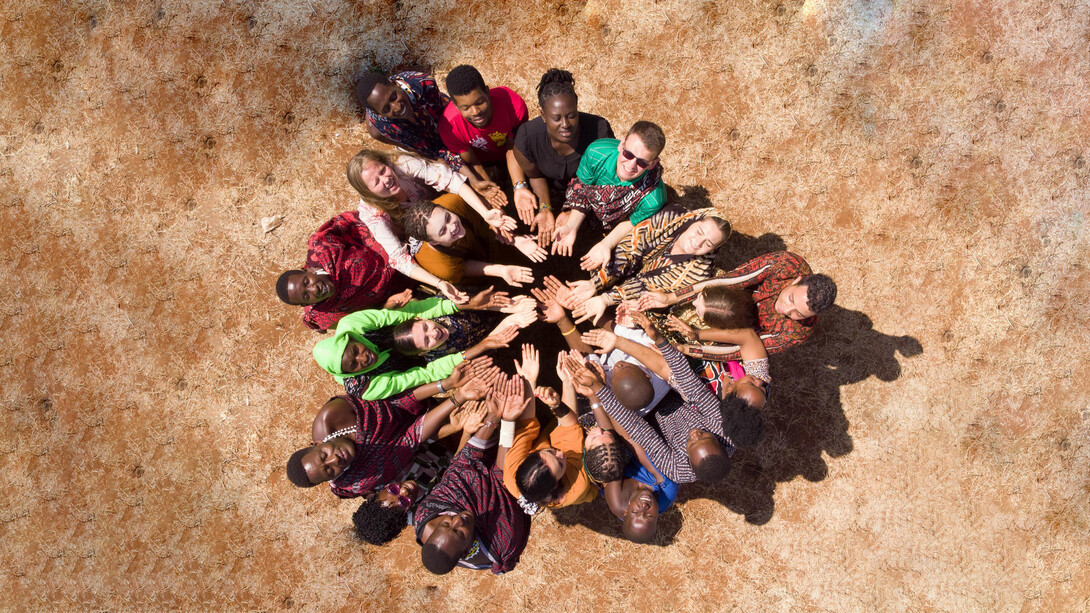People want to be well, but what constitutes well-being? Searching for well-being and/or wellness pillars, it is difficult to find alignment. Many organizations look at wellness at the country level, some look exclusively at health factors, others at systemic and structural issues, and others still through needs assessments.
Even though these models and frameworks are quite disparate, some themes remain consistent.
Well-being frameworks
OECD: how's life?
The Organisation for Economic Co-operation and Development (OECD) lists 11 dimensions of well-being1: income and wealth, work and job quality, housing, health, knowledge and skills, environmental quality, subjective well-being, safety, work-life balance, social connections, and civic engagement.
This OECD list serves as a great baseline to compare further frameworks and indicators.
Australian Bureau of Statistics: measuring what matters framework
The Australian Government has a framework of five themes and 12 dimensions of wellbeing2. The first theme is being healthy, with dimensions of (1) equitable access to quality health and care services and (2) healthy throughout life.
The next is feeling secure with dimensions of (3) living peacefully and feeling safe, and (4) having financial security and access to housing.
The theme of sustainability includes (5) protecting, repairing, and managing the environment and (6) a resilient and sustainable nation.
This is followed by the theme. Cohesive with the dimensions (7) Valuing diversity, belonging, and culture; (8) having time for family and community; and (9) trust in institutions.
Finally, there is the theme Prosperous, including dimensions (10) Broad opportunities for employment and well-paid, secure jobs; (11) Access to education, skills development, and learning throughout life; and (12) A dynamic economy that shares prosperity.
Social determinants of health
Some organizations also look at social determinants of health (SDOH) when exploring well-being.
Healthy people 2030
The United States Office of Disease Prevention and Health Promotion, as part of the Healthy People 2030 initiative, groups SDOH into 5 domains3: Economic Stability, Education Access and Quality, Healthcare Access and Quality, Neighborhood and Built Environment, and Social and Community Context.
Sharecare: community well-being index
The wellbeing index from Sharecare4 consists of 5 individual health factors and 5 SDOH. Looking at health, Sharecare lists purpose, social, financial, community, and physical factors.
Then, considering social determinants, they list healthcare access, food access, resource access, housing & transportation, and economic security.
Framework synthesis
Looking across these frameworks and models, there is agreement on some key factors. Most mention safety, security, and/or basic needs, sometimes as individual pillars or often in combination.
All include health, typically both physical and mental health. All also agree on community, social well-being, belonging, and/or inclusion. Again, sometimes these are individual points, and sometimes they distinguish between community & friendship with belonging & acceptance, but regardless of the breakdown, all are considered key factors.
Many mention income, employment, and/or finances. Some mention education, learning, and/or meaningful work. While school and work can be pillars on their own, the underlying message appears to be growth and purpose, with income also providing security.
Another way to look at well-being is through human needs.” People are well if their needs are met. This is perhaps most known through the pyramid of Maslow’s Hierarchy of Needs.5
Maslow’s hierarchy of needs
Needs consist of physiological needs like food & water, warmth & shelter, and sleep. Safety needs, meaning a safe environment, income & resources, freedom from crime or abuse, and freedom from serious illnesses. Love and belonging needs include acceptance, affection, community, and friendship. Esteem needs encompass self-worth, competency, dignity, independence, and purpose, and at the highest level, self-actualization needs, which the model takes to mean autonomy, morality, creativity, unity, and exploration.
The subcategories of the main five levels vary by source, and there is criticism that one must meet the needs of one level to advance to the next. Another model comes from Manfred Max-Neef6:
Human scale development
This model consists of nine categories: Subsistence, Protection, Affection, Understanding, Participation, Idleness, Creation, Identity, and Freedom.
Within each category, there are topics such as physical health, mental health, food, shelter, work, friendships, family, respect, rights, nature, belonging, and autonomy.
Needs and subjective well-being around the world
An article in the Journal of Personality and Social Psychology by Tay & Diener [7] analyzes both needs and subjective well-being together. The needs considered are basic needs for food and shelter, safety and security, social support and love, respect and pride in activities, mastery, self-direction and autonomy, and income.
The subjective well-being measures are life evaluation, positive feelings, and negative feelings.
Refining frameworks synthesis
Now, in addition to safety/security, health, income, and community/inclusion, there are additional topics of self-esteem, respect, growth/mastery, and autonomy.
Autonomy is a key piece in the context of being able to do the things that one wants to do. Being sick or injured, or having a disability, disorder, or disease, can cause someone to be physically unable to do something they value.
Being mentally unwell, having unhealthy social well-being, and/or lacking purpose can reduce a person’s motivation and ability to lead the life they want to live. Finances too can be a barrier to goals.
There are also larger structural, systemic issues that can affect this ability to pursue interests, as well as the other well-being pillars. Physical infrastructure can affect those with disabilities. Discrimination and unequal laws can affect all areas of well-being. Issues with accessibility and equitable opportunities also provide huge obstacles for many to have consistent well-being.
Digging deeper though, why are these consistently seen as important? What is it day to day that these items bring? Some polls and surveys dig deeper into this, like Gallup8 and the World Health Organization9.
Daily well-being
Gallup: positive experience index
Positive experience index questions: looking at the previous day, did you feel well rested, treated with respect, smile or laugh a lot, learn or do something interesting, and experience enjoyment?
Negative experience index questions: also looking at yesterday, did you experience physical pain, worry, sadness, stress, and/or anger?
The World Health Organization: five well-being index (WHO-5)
I have felt cheerful and in good spirits.
I have felt calm and relaxed.
I have felt active and vigorous.
I woke up feeling fresh and rested.
My daily life has been filled with things that interest me.
Being well summary
Looking again at all the models and frameworks across well-being, health, SDOH, and needs assessments, these daily well-being indicators are an excellent supplement to the existing synthesis. Being safe and physically healthy means that a person is free of pain. Feeling safe also helps with mental and emotional health, which leads to more positive feelings of peace and joy and alleviates negative feelings of fear, stress, and worry.
Mental and social well-being also help bring feelings of love, acceptance, and warmth and take away negative feelings. This is perhaps what some models mean by subjective well-being.
Financial security of employment and income can help address other areas. If someone is physically or mentally unwell, money can help provide treatment. If a feeling of community is lacking, money can help provide opportunities for clubs, social activities, shared meals, etc. Having income supports other areas in moving from “unwell” to “well.”
Experiences of feeling included, having growth opportunities, and having purpose also lead away from negative feelings of loneliness, frustration, despair, and ennui and to feelings of peace, joy, love, and acceptance.
Caring for others
Even though all of the frameworks distill to wanting to feel good and not wanting to feel bad, people still deeply care about other people and the planet.
Often this care for others is seen in models and framework as the well-being of children, partner(s), family, and friends, but can also include pets, plants, the environment, a team or club, neighbors, and others.
If those one cares about are unwell, it affects personal mental and emotional well-being.
Putting it all together
It could be said then that well-being moment to moment is to (1) be physically free of pain and discomfort, (2) be able to do the things one wants to do, and (3) have well-being for those one cares about, which all combine simplistically to experiencing positive feelings and not experiencing negative feelings.
These can be broken down across domains of:
Physical well-being: safety, security, basic needs, and physical health.
Mental well-being: mental health and feelings of wellness.
Social well-being: community and inclusion.
Emotional well-being: growth and purpose.
While the absence of systemic and structural barriers, plus financial and environmental well-being, provides support to the domains and well-being moment to moment.
References
1 Organisation for Economic Co‑operation and Development. (2024). How’s life? 2024: Well‑being and resilience in times of crisis. OECD Publishing.
2 Australian Bureau of Statistics. (n.d.). Measuring what matters: About Measuring what matters.
3 U.S. Department of Health and Human Services, Office of Disease Prevention and Health Promotion. (n.d.). Social determinants of health. In Healthy People 2030.
4 Sharecare. (2023, August 28). Community Well-being Index: State rankings report.
5 CNN. (n.d.). Maslow’s hierarchy of needs explained.
6 Max-Neef, M. A. (1989). From the outside looking in: Experiences in ‘barefoot economics’ [Dag Hammarskjöld Foundation Occasional Paper No. 1]. Dag Hammarskjöld Foundation.
7 Tay, L., & Diener, E. (2011). Needs and subjective well-being around the world. Journal of Personality and Social Psychology, 101(2), 354–365.
8 Gallup. (2019). Gallup 2019 Global Emotions Report. Gallup, Inc.
9 World Health Organization. (2024). WHO-5 well‑being index.
















